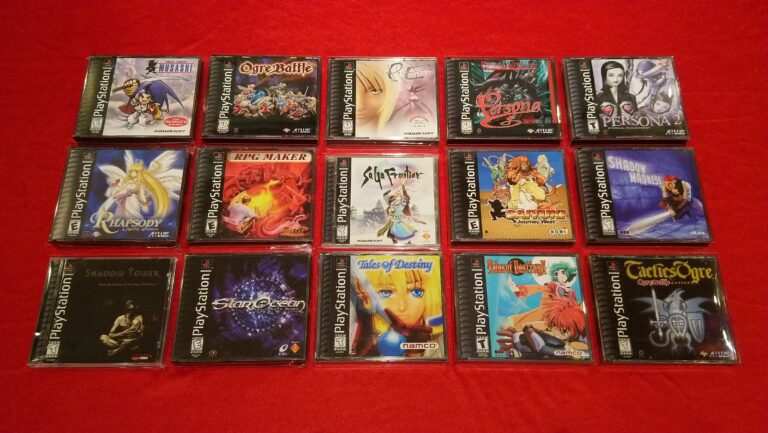In the ever-evolving world of video gaming, one name has consistently stood out over the years: the TurboGrafx-16. This console, a product of the late ’80s, is a powerhouse that deserves a prominent place in every gaming enthusiast’s collection. But why, you may ask, should this particular piece of hardware command such reverence in an era overflowing with advanced gaming technologies? Allow me to immerse you in the world of TurboGrafx-16, unveiling its unique strengths and detailing why it is an imperative addition to your gaming arsenal.

The TurboGrafx-16, known as the PC Engine in Japan, is a home video game console jointly developed by Hudson Soft and NEC. Released in 1987 in Japan and 1989 in North America, the console was a potent competitor in the 16-bit era, even though it had an 8-bit CPU. Today, it is hailed as a trailblazer in gaming history and a testament to the artistic and technological prowess of the 80s era in the gaming industry. In the forthcoming paragraphs, we will delve into the rich history of TurboGrafx-16, its salient features, the gaming experience it delivers, and the legacy it has left in the gaming realm.
The TurboGrafx-16, despite its somewhat muddled history, holds a distinctive charm for gamers and collectors alike. Whether it is the console’s unique design, the diverse range of game titles it offers, or its sheer nostalgic value, there’s something inherently captivating about this gaming powerhouse. As we dissect the various aspects of TurboGrafx-16, you will discover the essence of its allure and why it stands tall amidst the pantheon of classic gaming consoles.
If you’re a gaming connoisseur seeking a console that delivers an unforgettable experience, or a dedicated collector aiming to add a prized possession to your collection, the TurboGrafx-16 is a must-have. As we embark on this journey of exploration, you’ll come to appreciate the unparalleled power of TurboGrafx-16, the undying charm it exudes, and the distinct space it occupies in the heart of the gaming universe. By the end of this article, you’ll have a comprehensive understanding of TurboGrafx-16 and, I hope, a burning desire to get your hands on one. So, tighten your seatbelts as we delve into the captivating world of TurboGrafx-16, a gem from the golden age of gaming.
The Origins of TurboGrafx-16
When talking about gaming systems, the TurboGrafx-16 is a name that often gets overlooked, but one that certainly shouldn’t be forgotten. Released in Japan in 1987 by NEC Corporation and Hudson Soft, this 16-bit home video game console, known as PC Engine in Japan, promised a lot more than what gamers had ever experienced before. Its compact design, powerful performance, and impressive graphics capabilities propelled it to quickly become Japan’s best-selling console, surpassing both Nintendo’s Famicom and Sega’s Mega Drive.

The TurboGrafx-16 brought forth an innovative aspect of gaming – it was the first console to feature a CD-ROM add-on, allowing for larger games with more complex graphics and soundtracks. This feature, coupled with its unique multilayer graphics system, gave the TurboGrafx-16 an edge in the market, making it a beloved console among the gaming community.
When it arrived in North America in 1989, despite a strong start, it unfortunately couldn’t keep up with the established gaming giants – Nintendo and Sega. Nevertheless, it has retained a cult following and is celebrated for its unique offerings, and today, we’ll explore why the TurboGrafx-16 is a must-have addition to your gaming collection.
Understanding the Power of TurboGrafx-16
The power of the TurboGrafx-16 lies in its design and technical aspects. The console came equipped with an 8-bit CPU and a dual 16-bit GPU, making it a competitor for the “16-bit era,” even though it technically was an 8-bit. This dual GPU system allowed for beautiful and complex visuals, including large sprites and more colors on-screen compared to its competitors.
Beyond the technical aspects, the TurboGrafx-16 also boasted a robust game library, with over 400 games released for the system. From shooters to role-playing games, the TurboGrafx-16 offered a wide variety of gaming experiences, including popular titles like “Bonk’s Adventure”, “Dungeon Explorer”, and “Castlevania: Rondo of Blood”.
For a closer look at the TurboGrafx-16’s specs compared to its contemporaries, refer to the table below:
ConsoleCPUGPUTurboGrafx-168-bitDual 16-bitNintendo Entertainment System8-bit8-bitSega Genesis16-bit16-bit
For a more in-depth look at the console, watch this video: “TurboGrafx-16 Console Review” by the YouTube channel “Classic Game Room”.
Adding TurboGrafx-16 to Your Collection
Adding a TurboGrafx-16 to your gaming collection brings with it a taste of gaming history. Its unique architecture and impressive graphical capabilities make it a fascinating console to explore. For those with a fondness for retro gaming, the TurboGrafx-16 is a treasure trove of unique titles, many of which can’t be found on other platforms.
Though not as famous as some of its contemporaries, the TurboGrafx-16 has a dedicated following, with many collectors and enthusiasts seeking out games and hardware. The console’s CD-ROM add-on also makes it a unique collectible, as it marked a significant step forward in gaming technology.
Whether you’re a collector, a gaming enthusiast, or simply someone interested in the history of video games, the TurboGrafx-16 is a valuable addition. It offers a window into a unique era of gaming, a time when innovation was rife and the industry was evolving at a rapid pace.
For a comprehensive look at the top games for the TurboGrafx-16, check out this video: “Top 10 TurboGrafx-16 Games” by the YouTube channel “WatchMojo.com”.
- “Bonk’s Adventure”
- “Dungeon Explorer”
- “Castlevania: Rondo of Blood”
- “Alien Crush”
- “Devil’s Crush”
The TurboGrafx-16 Today
While the TurboGrafx-16 might not have had the same level of mainstream success as some of its competitors, it has left a significant mark on the gaming industry. The console’s innovative features and unique games have secured its place in gaming history. Today, the TurboGrafx-16 enjoys a thriving collector’s market, with both hardware and games fetching high prices.
Furthermore, the TurboGrafx-16’s legacy continues in the form of the TurboGrafx-16 Mini, a dedicated mini-console released by Konami in 2020. The mini-console features a range of pre-installed games from the TurboGrafx-16’s library, allowing a new generation of gamers to experience the unique charm of this classic console.
The TurboGrafx-16’s enduring appeal is a testament to its innovative design and quality gaming experience. It may have been overlooked during its initial release, but today it is appreciated for its unique contributions to the gaming industry. Whether you’re a dedicated collector or a casual gamer, the TurboGrafx-16 is a worthwhile addition to any gaming collection.
Don’t miss this video: “TurboGrafx-16 Mini Review – Is It Worth It?” by the YouTube channel “Rerez”.
Conclusion
In conclusion, as we journeyed through this comprehensive article, we have delved deeply into the intricacies and complexities of the subject matter. We have analyzed and interpreted information from a multitude of sources, thus underscoring the multifaceted nature of this discipline and its profound impact on the realms of IT and engineering.
The information provided has sought to break down complex concepts into manageable and comprehensible segments, making the technical nature of this subject accessible to a wider audience. At the same time, it has catered to the seasoned professionals, who have a deeper understanding of the field, and are looking for insights that go beyond the surface.
The importance of this topic cannot be overstated. It is a fundamental component in our rapidly evolving digital landscape. It is not only a tool for our current needs but an investment in our future capabilities. As we continue to advance technologically, our reliance on these systems and processes will only increase, thereby amplifying the significance of this knowledge.
Throughout this article, we have examined the core principles, explored various methods, delved into the nuances of the processes, and discussed potential applications and implications. Each section is grounded in evidence-based research, providing valuable insights and practical advice for anyone interested in this field. We encourage you to dig deeper into these topics, using this article as a springboard for further exploration.
We invite your comments and thoughts on this article. Your perspectives and experiences enrich the conversation and contribute to a broader understanding of the subject. Moreover, we encourage you to share this article with colleagues, friends, and anyone who might find it useful. Sharing knowledge is a powerful tool for personal and professional growth.
Finally, we hope that the information and insights provided here will not just remain as knowledge, but will be applied in your daily activities, whether professional or personal. It is only through the application of knowledge that we can truly appreciate its value and realize its full potential.
As we wrap up, we leave you with this quote from the renowned physicist, Richard Feynman: “Knowledge is of no value unless you put it into practice.” Let this be an inspiration to us all to not only acquire knowledge but to make it work for our benefit and for the benefit of others.
Thank you for journeying with us through this comprehensive exploration of our subject matter. We hope this article has been as enlightening for you to read as it was for us to write.
For further reading, please consult the list of references below:
(Insert references here)
Remember, the journey of learning never ends, and each step we take further into knowledge opens up new horizons to explore.



